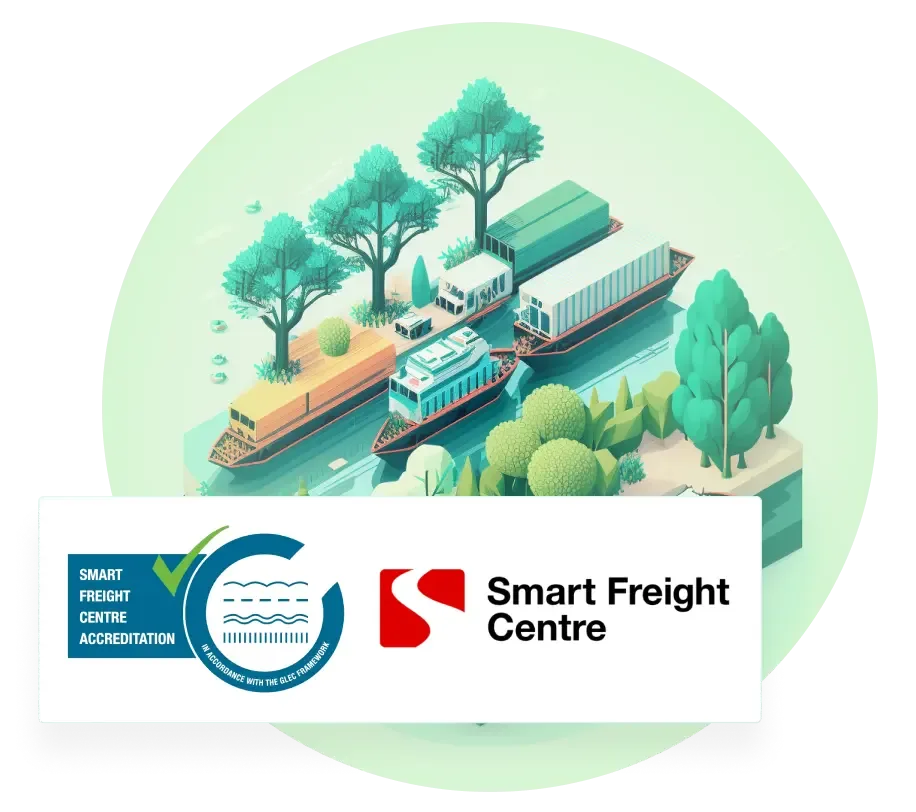GLEC-Accredited Emissions values
The GLEC-Framework (Global Logistics Emissions Council) is the only globally recognized methodology for harmonized calculation and reporting of the logistics GHG footprint across the multimodal supply chain. Applying the GLEC-Framework in Routescanner, we make sure we use neutral and unbiased data, allowing a fair and unprejudiced comparison between different modalities.

The Framework
It is in alignment with:
- Greenhouse Gas Protocol
- UN-led Global Green Freight Action Plan
- CDP reporting.
The GLEC-Framework is issued by the Smart Freight Centre, aiming to set a guideline that works for all industries globally.
Principles
The principle behind the calculation is straightforward: for each container that is to be transported from its origin to its destination, the total transport is broken down in individual moves of the container, per mode of transport.
For each individual movement, the distance to be travelled is calculated, and the specific emission per km for that mode of transport is used; it is multiplied with the distance, giving an estimate for the amount of carbon emission for that movement. This process is repeated for each individual move that is required to transport the container from origin to destination. Also an estimate for the carbon emission associated with the container handling at the terminal(-s) is added, giving an estimate of the total carbon emission of the container transport.
Calculating distances
How distances are calculated depends upon the mode of transport. For deepsea, shortsea, RoRo, and inland waterways, our own network is used to determine the shortest possible route between origin and destination. This network is based upon common routes as followed by actual seagoing and inland vessels. For land transport (rail and road), actual rail and road networks are being used to determine the shortest route between origin and destination.
For all modes of transport, constraints are implemented whenever applicable; e.g.: some vessels are not able to use the Panama Canal because of their size; freight traffic is not allowed on certain (land-)routes.
Average carbon emissions per mode of transport
The average carbon emissions are per mode of transport, per geographical area or per trade lane (all amounts are in g CO₂e per km, per TEU). Please note that in the GLEC Framework documentation for mode of transports rail, truck and barge, the amounts are given in kg CO₂e per km, per ton. These amounts are converted to g CO₂e per km, per TEU; the average weight of a loaded container per TEU is used to convert.
Differentation for barge, rail and truck
Within the GLEC-Framework a differentiation is being made for the modes of transport barge, rail and truck: for barge, the type of barge being used (container vessels of 110 m, 135 m, or coupled convoys); for rail, besides geographical differentiation, for Europe also a distinction between diesel and electric traction is made; for truck, besides geographical differentiation, a distinction for the size of the truck is indicated. For Routescanner, these distinctions are currently not incorporated because we possess no knowledge of the specific transport means that is being used.
Terminal handling
For container handling on terminals, the following figures apply:
- Sea and barge terminals: 10.7 kg CO₂e/container
- Inland terminal: 13 kg CO₂e/container